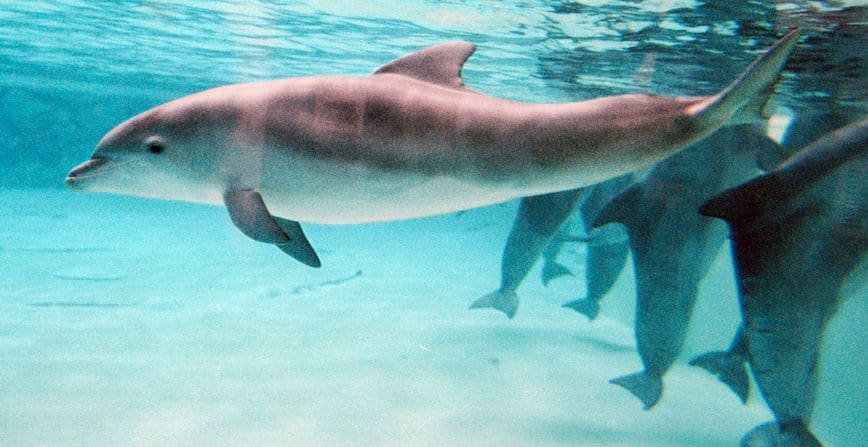
Delfin på Kolmården kvävd av konstgjord tång
Den runt 40-åriga Nephele, Kolmårdens äldsta delfinhona, dog oväntat i januari. Nu visar obduktionsrapporten att flasknosdelfinen kvävdes av konstgjord tång, rapporterar TT.
– Tångbiten hittades i hennes svalg och den hade satt sig så olyckligt att den påverkade andningen, säger chefsveterinären Bim Boijsen, som beskriver det som en ”stor sorg”.
Tången användes som så kallad miljöberikning i bassängen – leksaker och annat som syftar till att stimulera djuren. Tången har nu tagits bort och kontrollerna av miljöberikningen ökats, enligt Boijsen.
bakgrund
Flasknosdelfin
Wikipedia (en)
Bottlenose dolphins are aquatic mammals in the genus Tursiops. They are common, cosmopolitan members of the family Delphinidae, the family of oceanic dolphins. Molecular studies show the genus contains three species: the common bottlenose dolphin (Tursiops truncatus), the Indo-Pacific bottlenose dolphin (Tursiops aduncus), and Tamanend's bottlenose dolphin (Tursiops erebennus). Others, like the Burrunan dolphin (Tursiops (aduncus) australis), may be alternately considered their own species or be subspecies of T. aduncus. Bottlenose dolphins inhabit warm and temperate seas worldwide, being found everywhere except for the Arctic and Antarctic Circle regions. Their name derives from the Latin tursio (dolphin) and truncatus for the truncated teeth (the type specimen was old and had worn down teeth; this is not a typical characteristic of most members of the species).Numerous investigations of bottlenose dolphin intelligence have been conducted, examining mimicry, use of artificial language, object categorization, and self-recognition. They can use tools (sponging; using marine sponges to forage for food sources they normally could not access) and transmit cultural knowledge from generation to generation, and their considerable intelligence has driven interaction with humans. Bottlenose dolphins gained popularity from aquarium shows and television programs such as Flipper. They have also been trained by militaries to locate sea mines or detect and mark enemy divers. In some areas, they cooperate with local fishermen by driving fish into their nets and eating the fish that escape. Some encounters with humans are harmful to the dolphins: people hunt them for food, and dolphins are killed inadvertently as a bycatch of tuna fishing and by getting caught in crab traps.
Bottlenose dolphins have the third largest encephalization levels of any mammal on Earth (humans have the largest, followed by Northern Right whale dolphins), sharing close ratios with those of humans and other cetaceans, while being twice as high of other great apes. This more than likely contributes to their high intelligence and emotional intelligence.
Omni är politiskt obundna och oberoende. Vi strävar efter att ge fler perspektiv på nyheterna. Har du frågor eller synpunkter kring vår rapportering? Kontakta redaktionen